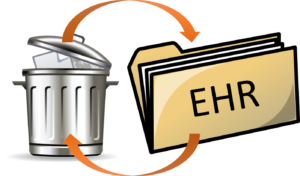Last week, several of us from the AEGIS team attended ONC’s third annual Interoperability Forum at the Renaissance Hotel in Washington, DC. We were pleased to see the level of excitement and even optimism about the industry’s progress toward achieving true interoperability among systems using electronic health information. We continue to see the involvement of the Payer community as central to this progress. Both HL7’s Da Vinci Project and ONC’s FHIR® At Scale Taskforce (FAST) focus on interoperability benefits to Payers, and both conducted workgroup and executive steering committee meetings during the week (with AEGIS participation!).

One clear message coming out of the event was the importance of ensuring the underlying data is getting shared accurately, completely, and in a timely fashion. This has been one of AEGIS’ central messages regarding the importance of continuous testing for interoperability. The most intriguing opportunities for advancement in healthcare – precision medicine, AI, learning healthcare, moonshots – simply cannot reach their potential without reliable data. The age old axiom of computer science – garbage in, garbage out – still holds true.
One particular session on that subject during the Interoperability Forum was a panel in the Content Interoperability track from the U.S. Core Data Interoperability (USCDI) task force. It was an interesting panel in that various aspects of health data were exposed as being inconsistent and inconsistently used. One of the primary examples given was that, in lab results, proper LOINC codes were used only about 44% of the time. In that data bed, there are non-standard values that are in need of interpretation. The bottom line is that it’s all about the data quality; those non-standard entries don’t really get translated, so it’s data that means something in human readable format but once it goes on the wire it isn’t a simple matter to categorize it.
The panel did discuss some of the data translation services/algorithms, but indicated that we are at about 50% for that (getting better).
A specific case they wanted to look at was better ways for providers to enter non-standard data into their EHRs that would aid in translation of the values and usage by other consumers of that data. That segued into a short presentation about how to classify sex and gender and what HL7’s Gender Harmony Project (GHP) was doing in the space to classify types and uses of sex and gender in a clinical vs. administrative way.
One question from the audience that generated a bit of conversation was around rapidly changing and maturing specifications, data elements, and coding. The panelists described the USCDI maturity process and the versioning of specifications, which seems to be at the very beginning of the upswing on the Innovation S-curve. As we think about it, versioning and rapid change within multiple standards are being recognized as something that needs to be addressed in a systematic way.
All of this, of course, resonates with us at AEGIS. We built the Touchstone FHIR testing platform to allow testing against different versions of the standard over time for backward and forward compatibility of the software being built in this time of rapid change. We’re thrilled to see the entire industry reaching the point where the value of this kind of testing is recognized as essential. You can learn more about what AEGIS is doing to advance interoperability and ensure reliable data here, on our Touchstone site and check out our newly published white paper too.

